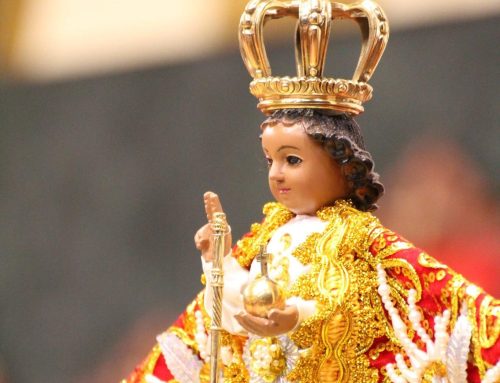Saint Fabian – 20 January
Saint Fabian was a Roman layman who came into the city from his farm one day as clergy and people were preparing to elect a new pope. Eusebius, a Church historian, says a dove flew in and settled on the head of Fabian. This sign united the votes of clergy and laity, and he was chosen unanimously.
He led the Church for 14 years and died a martyr’s death during the persecution of Decius in 250 A.D. Saint Cyprian wrote to his successor that Fabian was an “incomparable” man whose glory in death matched the holiness and purity of his life.
In the catacombs of Saint Callistus, the stone that covered Fabian’s grave may still be seen, broken into four pieces, bearing the Greek words, “Fabian, bishop, martyr.” Saint Fabian shares the celebration of his liturgical feast with Saint Sebastian on January 20.
Saint Sebastian – 20 January
Almost nothing is historically certain about Sebastian except that he was a Roman martyr, was venerated in Milan even in the time of Saint Ambrose and was buried on the Appian Way, probably near the present Basilica of St. Sebastian. Devotion to him spread rapidly, and he is mentioned in several martyrologies as early as 350.
The legend of Saint Sebastian is important in art, and there is a vast iconography. Scholars now agree that a pious fable has Sebastian entering the Roman army because only there could he assist the martyrs without arousing suspicion. Finally he was found out, brought before Emperor Diocletian and delivered to Mauritanian archers to be shot to death. His body was pierced with arrows, and he was left for dead. But he was found still alive by those who came to bury him. He recovered, but refused to flee.
One day he took up a position near where the emperor was to pass. He accosted the emperor, denouncing him for his cruelty to Christians. This time the sentence of death was carried out. Sebastian was beaten to death with clubs. He was buried on the Appian Way, close to the catacombs that bear his name.
Patron Saint of Athletes
Saint Agnes – 21 January
Almost nothing is known of this saint except that she was very young—12 or 13—when she was martyred in the last half of the third century. Various modes of death have been suggested—beheading, burning, strangling.
Legend has it that Agnes was a beautiful girl whom many young men wanted to marry. Among those she refused, one reported her to the authorities for being a Christian. She was arrested and confined to a house of prostitution. The legend continues that a man who looked upon her lustfully lost his sight and had it restored by her prayer. Agnes was condemned, executed, and buried near Rome in a catacomb that eventually was named after her. The daughter of Constantine built a basilica in her honor.
Patron Saint of Girls and Girl Scouts
Saint Vincent of Zaragossa – 22 January
Most of what we know about this saint comes from the poet Prudentius. His Acts have been rather freely colored by the imagination of their compiler. But Saint Augustine, in one of his sermons on Saint Vincent, speaks of having the Acts of his martyrdom before him. We are at least sure of his name, his being a deacon, the place of his death and burial.
According to the story we have, the unusual devotion he inspired must have had a basis in a very heroic life. Saint Vincent of Zaragossa was ordained deacon by his friend Saint Valerius of Zaragossa in Spain. The Roman emperors had published their edicts against the clergy in 303, and the following year against the laity. Vincent and his bishop were imprisoned in Valencia. Hunger and torture failed to break them. Like the youths in the fiery furnace, they seemed to thrive on suffering.
Valerius was sent into exile, and Dacian, the Roman governor, now turned the full force of his fury on Saint Vincent of Zaragossa. Tortures that sound very modern were tried. But their main effect was the progressive disintegration of Dacian himself. He had the torturers beaten because they failed.
Finally he suggested a compromise: Would Vincent at least give up the sacred books to be burned according to the emperor’s edict? He would not. Torture on the gridiron continued, the prisoner remaining courageous, the torturer losing control of himself. Vincent was thrown into a filthy prison cell—and converted the jailer. Dacian wept with rage, but strangely enough, ordered the prisoner to be given some rest.
Friends among the faithful came to visit Saint Vincent of Zaragossa, but he was to have no earthly rest. When they finally settled him on a comfortable bed, he went to his eternal rest.
Saint Francis de Sales – 24 January
Saint Francis de Sales was destined by his father to be a lawyer so that the young man could eventually take his elder’s place as a senator from the province of Savoy in France. For this reason Francis was sent to Padua to study law. After receiving his doctorate, he returned home and, in due time, told his parents he wished to enter the priesthood.
His father strongly opposed Francis in this, and only after much patient persuasiveness on the part of the gentle Francis did his father finally consent. Francis was ordained and elected provost of the Diocese of Geneva, then a center for the Calvinists. Saint Francis de Sales set out to convert them, especially in the district of Chablais. By preaching and distributing the little pamphlets he wrote to explain true Catholic doctrine, he had remarkable success.
At 35, he became bishop of Geneva. While administering his diocese he continued to preach, hear confessions, and catechize the children. His gentle character was a great asset in winning souls. He practiced his own axiom, “A spoonful of honey attracts more flies than a barrelful of vinegar.”
Besides his two well-known books, the Introduction to the Devout Life and A Treatise on the Love of God, he wrote many pamphlets and carried on a vast correspondence. For his writings, he has been named patron of the Catholic Press. His writings, filled with his characteristic gentle spirit, are addressed to lay people. He wants to make them understand that they too are called to be saints.
As he wrote in The Introduction to the Devout Life: “It is an error, or rather a heresy, to say devotion is incompatible with the life of a soldier, a tradesman, a prince, or a married woman…. It has happened that many have lost perfection in the desert who had preserved it in the world.”
In spite of his busy and comparatively short life, he had time to collaborate with another saint, Jane Frances de Chantal, in the work of establishing the Sisters of the Visitation. These women were to practice the virtues exemplified in Mary’s visit to Elizabeth: humility, piety, and mutual charity. They at first engaged to a limited degree in works of mercy for the poor and the sick. Today, while some communities conduct schools, others live a strictly contemplative life.
Patron Saint of Authors, Deafness, Journalists, Writers





